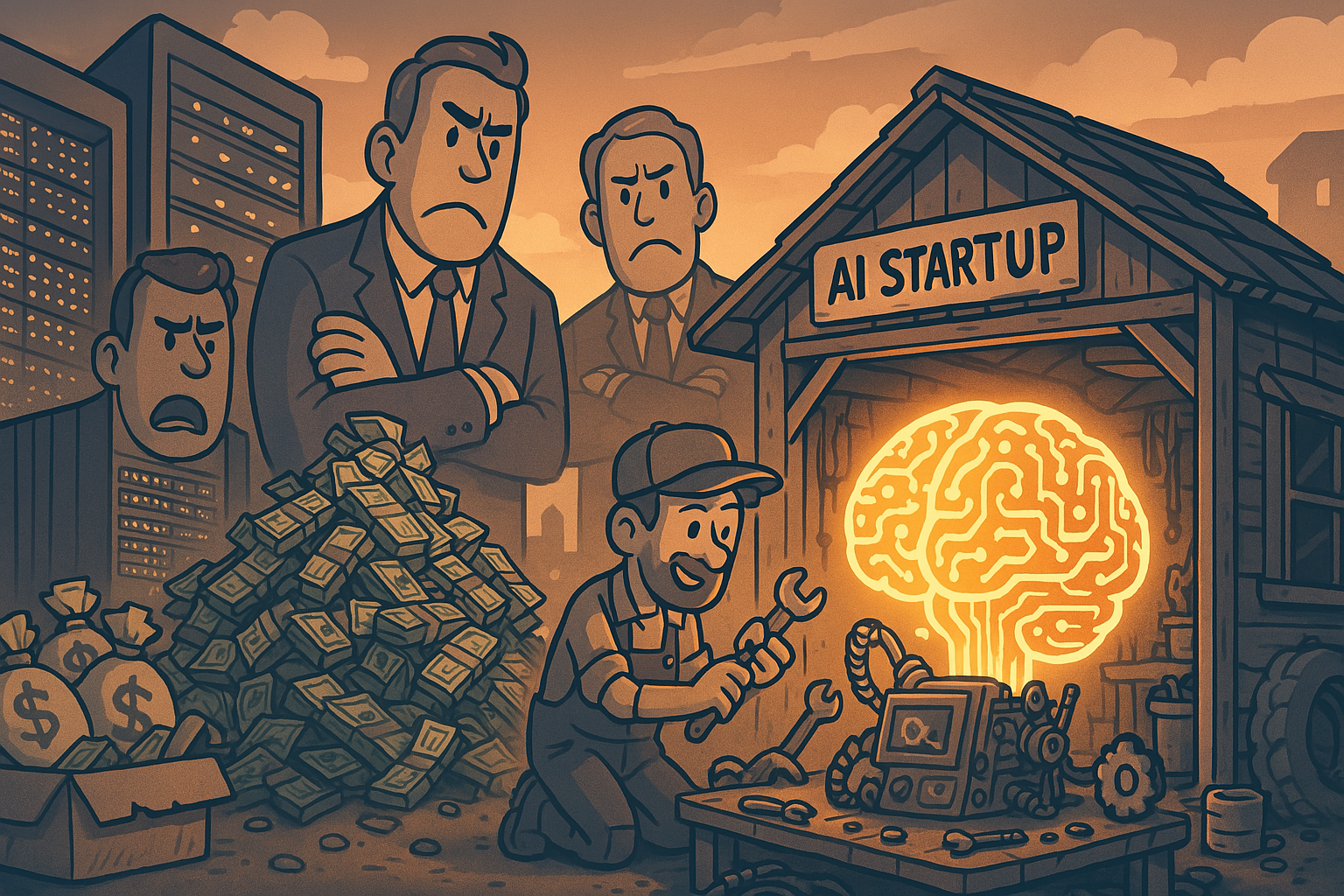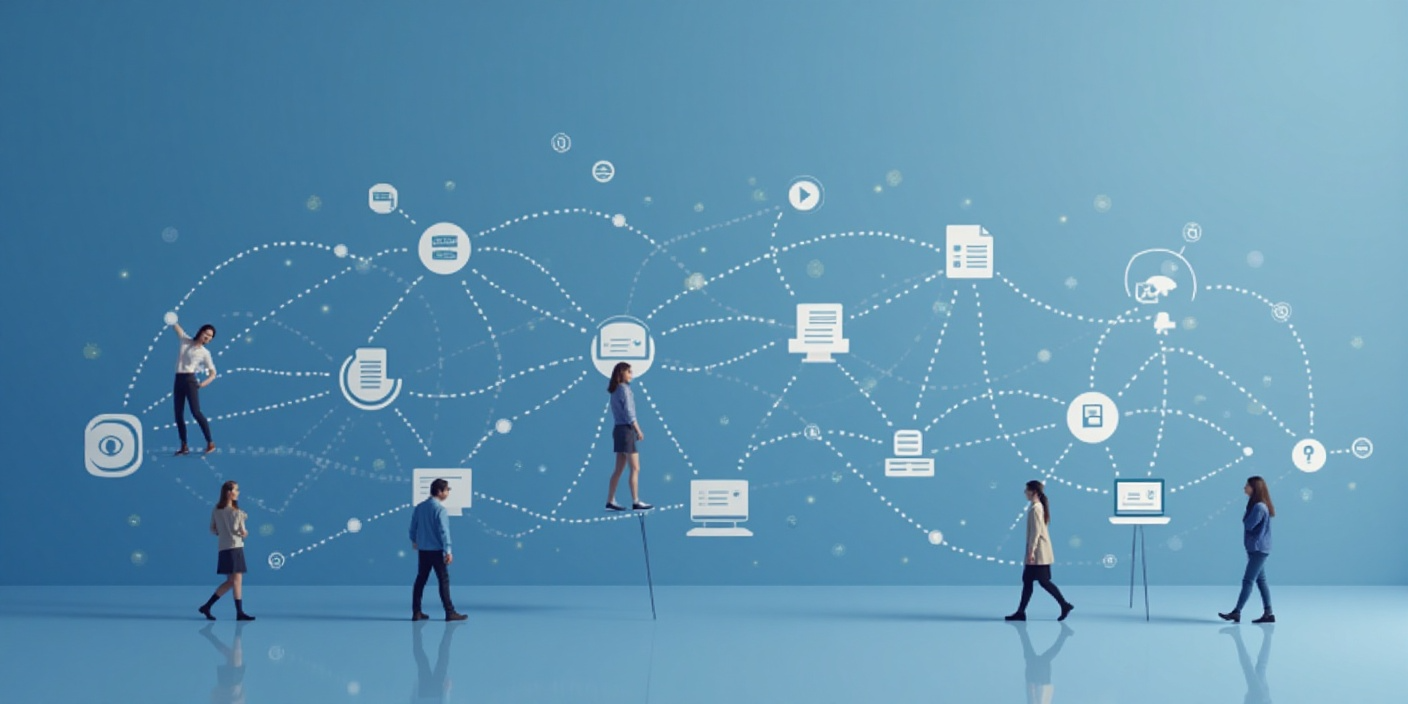Highlights
Top Insights
Resourcefulness can outperform resources. DeepSeek built a competitive AI model without cutting-edge GPUs, massive funding, or years of R&D—challenging the belief that only well-resourced giants can innovate at the frontier of AI.
Creative use of existing tools lowers costs dramatically. Like Square using the iPhone’s headphone jack or Not Impossible Labs repurposing scientific studies on vibration, companies can achieve breakthroughs by creatively leveraging tools, platforms, and knowledge that already exist, rather than reinventing the wheel.
Tapping into non-traditional resources—like other industries’ practices—can unlock powerful solutions. Like Kickstarter’s inspiration from historical patronage, organizations can access hidden leverage by looking beyond typical business resources and industries.
Source: What DeepSeek can teach us about resourcefulness (Harvard Business Review)
Top News
1. OpenAI is expanding its Academy into a free, public online hub to promote AI literacy. This democratizes AI education, equipping diverse global communities with essential skills for an AI-driven future.
2. Amazon has launched a research preview of Nova Act, a new AI model and SDK that enables developers to build agents capable of reliably performing complex, multi-step tasks in web browsers.
3. Chinese startup Zhipu AI has launched a free AI agent, AutoGLM Rumination, capable of tasks like research and travel planning. This raises the stakes in China’s AI competition by offering accessible, high-performing tools for everyday planning and research.
4. DeepMind’s Dreamer AI learned to find diamonds in Minecraft entirely on its own by building a world model to imagine future outcomes. This showcases AI’s ability to learn and problem-solve independently, advancing the path toward truly general-purpose AI systems.
5. Runway’s new Gen-4 model enables highly consistent and controllable media generation. This marks a leap in creative control, enabling filmmakers and creators to generate consistent, high-quality video content with minimal input.
Additional Insights
1. Why a bottom-up approach to AI is doomed to fail (Board of Innovation)
Many companies launch their AI efforts with bottom-up enthusiasm but quickly stall without top-down leadership to provide strategic direction. While grassroots ideation taps into valuable insights from frontline employees, without executive guidance, it often leads to scattered experiments that fail to scale or deliver meaningful impact. True AI transformation demands clarity on business outcomes, investment priorities, and risk appetite—something only leadership can define. Passionate AI champions and democratized experimentation can help drive momentum, but they need the support, authority, and vision that only a top-down approach can provide. Ultimately, the most successful AI initiatives blend top-down focus with bottom-up creativity, turning inspiration into transformation.
2. TurboTax Meets Turbo Innovation: AI at Intuit (Sloan Management Review)
Intuit, the maker of TurboTax, has revolutionized its use of AI by creating GenOS, a proprietary generative AI operating system that empowers developers across the company. With GenOS, Intuit has streamlined the creation of AI applications, enabling faster innovation across products like TurboTax, QuickBooks, and Credit Karma, while enhancing user experience with features like real-time accuracy checks and personalized tax assistance. The centralized AI and data platform, built under Chief Data Officer Ashok Srivastava, has improved data quality, privacy, and operational efficiency, resulting in substantial cost savings and reduced reliance on human support. GenOS includes powerful tools such as GenRuntime for AI agent orchestration and GenSRF for managing security and compliance, making it a uniquely comprehensive environment for generative AI development. This strategic investment in AI infrastructure positions Intuit as a leader in applied AI, accelerating product development and transforming internal operations company-wide.
3. Human Creativity in the Age of LLMs (CHI 2025)
Through two large-scale experiments, the authors found that while LLMs can enhance creativity during assisted tasks, their use often leads to reduced originality and cognitive flexibility in unassisted follow-up tasks. Participants exposed to LLM-generated strategies or answers were more likely to show homogenized thinking and perform worse when later required to think independently. Interestingly, those with no LLM exposure consistently produced more diverse and original ideas and performed better in solution-finding tasks. These findings raise concerns about the long-term impact of LLMs on human creativity and underscore the need for careful design of AI tools that support rather than undermine independent creative thought.
Innovation Radar
1. AI Model Releases and Advancements
Runway’s new Gen-4 model enables highly consistent and controllable media generation—allowing users to create coherent characters, objects, and environments across scenes from simple references, with realistic motion, physics understanding, and production-ready video quality (Runway).
Amazon has launched a research preview of Nova Act, a new AI model and SDK that enables developers to build agents capable of reliably performing complex, multi-step tasks in web browsers by combining natural language understanding with precise UI interactions and code integration (Amazon).
Google DeepMind’s new Gemini Robotics models enable robots to perform complex, multi-step tasks—like folding origami or playing games—by combining advanced vision, language, and action capabilities with high dexterity and adaptability across various robot types, marking a major step toward general-purpose, helpful robots in everyday environments (Google).
2. AI Tools and Features
Chinese startup Zhipu AI has launched a free AI agent, AutoGLM Rumination, capable of tasks like research and travel planning, intensifying China’s AI race with claims of high performance and efficiency (Reuters).
Meta and University of Waterloo researchers have developed MoCha, an AI system that generates photorealistic, full-body animated characters from text, featuring synchronized speech, natural gestures, and multi-character interactions, outperforming existing models in realism and lip sync accuracy (The Decoder).
Anthropic has launched Claude for Education, a specialized AI version designed for higher education that supports teaching, learning, and administration through features like a guided Learning mode, campus-wide access, student programs, and partnerships with universities and edtech platforms to promote responsible and effective AI use in academia (Anthropic). OpenAI announced that all college students in the U.S. and Canada can access ChatGPT Plus—normally $20 per month—for free through May (The Verge).
3. AI Research and Social Impact
A brain–computer interface enhanced with AI has enabled a paralyzed woman to nearly instantly translate her thoughts into audible speech, marking a major advancement toward real-time, natural-sounding communication for people who cannot speak (Nature).
DeepMind’s Dreamer AI learned to find diamonds in Minecraft entirely on its own by building a world model to imagine future outcomes, marking a major step toward general-purpose AI that can adapt and learn without human guidance (Nature).
OpenAI is expanding its Academy into a free, public online hub to promote AI literacy and provide tools, best practices, and community learning for people from all backgrounds, with partnerships across education, nonprofits, and workforce organizations to support global skill-building in an AI-powered economy (OpenAI).
4. Other
Mitochondrial transplants—swapping damaged cellular powerhouses with healthy ones—are showing promise in treating conditions from heart damage to genetic diseases and aging, as researchers explore their potential to restore cell function, reduce inflammation, and even rejuvenate aging tissues (The Economist).
A new 3D-printed heat exchanger design featuring complex geometries optimized by simulations improves cooling efficiency and compactness, offering promise for high-performance applications like ships and data centers, though cost and manufacturing limitations may delay widespread adoption (MIT Technology Review).







